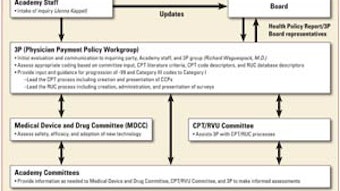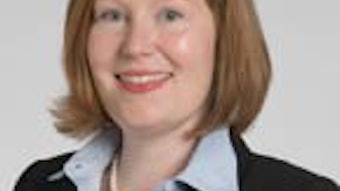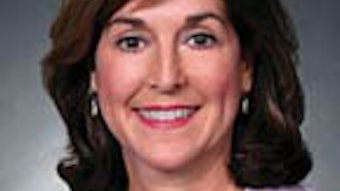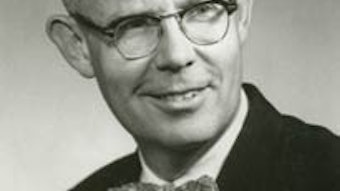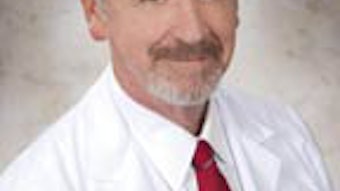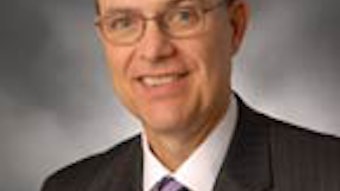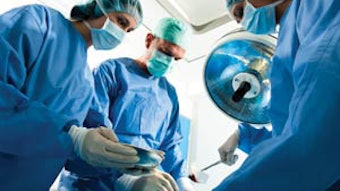AcademyU® Learning Station at Annual Meeting & OTO EXPO
Cathy Conley, Senior Manager, Online Learning There is more to learn at the 2012 Annual Meeting & OTO EXPO in Washington, DC, than what you will find in the instruction courses and miniseminars. In addition to the live education activities, the Foundation will showcase all education products available to members and nonmembers alike at the AcademyU® Learning Station. As described in the 2012 Education Opportunities, received with the February Bulletin, the complete array of education activities will be available for hands-on review. The AcademyU® Learning Station will showcase the breadth of learning opportunities available for physicians, residents, students, and allied health professionals. These include our online education (AcademyU® courses, the Online Lecture Series, and Clinical Otolaryngology OnLine (COOL)), our subscription-based activities (Home Study Course and Patient Management Perspectives in Otolaryngology (PMP)), live activities (Coding and Reimbursement Workshops), and our library of e-books. Samples of the products will be available to pique your interest and for you to learn how each one uniquely provides education for a variety of audiences. Most of the products offer AMA PRA Category 1 Credit.™ “The AcademyU® Learning Station offers Annual Meeting & OTO EXPO attendees a unique opportunity to review and interact with all the education activities provided by the Foundation. Each year, new products and modules are developed to meet the needs of every otolaryngology learner group,” said Sonya Malekzadeh, MD, coordinator for education with the Foundation. Also featured at the annual meeting will be demonstrations of the Foundation’s online products. These include the 25 courses, 125 online lectures, and 30 COOL modules. The demonstrations will assist you with navigating the courses and finding the content that is important to you. Also on display will be the significant upgrades to the site, making access and use of this content easier and more meaningful. COOL modules are designed for the non-otolaryngologist. PAs especially enjoy these activities as AAPA credit can be earned upon completion. In addition, many medical schools and residency programs use them to teach basic otolaryngology-head and neck surgery concepts. Another online demonstration will be the newly renamed and refocused Patient Management Perspectives in Otolaryngology (PMP). While this product remains available as a print piece, this demonstration will show the enhanced features of the online version through the use of multimedia. Registration for these fantastic products will be available onsite at the Learning Station. While attending the annual meeting you will have a final opportunity to register for the 2012-2013 Home Study Course. Next year’s topics include rhinology and allergic disorders, voice disorders, inflammatory diseases of the head and neck, and otology. Sample past publications will be available for your review and your registration can be completed onsite. Residents and residency program directors will want to visit the Learning Station and view the completely updated and enhanced Comprehensive Otolaryngologic Curriculum Learning through Interactive Approach (COCLIA). Test-drive the new COCLIA website and learn how to use it to start your own resident discussion groups. All discussion questions have been updated and digital media has been added to enrich the experience. New this year is the ENT Exam instructional video, which will be available to the public on YouTube and entnet.org. The video covers how to perform a thorough ENT exam complete with images of normal anatomy, normal variances, and common abnormalities. There are four modules covering the ear, oral cavity and neck, face and nose, and nasopharnyx and larynx. See how this video can help you train medical students, first year residents, PAs, NPs, and allied health professionals. Lastly, learn about the variety of e-books the Foundation has available. These are easily accessed on the Foundation website and can be downloaded for free. Visit the Learning Station to learn how to find our four e-books (“Primary Care Otolaryngology (3rd Edition),” “Geriatric Care Otolaryngology,” “Antimicrobial Therapy in Otolaryngology,” and “TMN Staging for Head and Neck Cancer”). “We take educating our members very seriously at the Foundation,” said Mary Pat Cornett, CMP, CAE, AAO-HNSF senior director of Education and Meetings. “The AcademyU® Learning Station is a great way to experience the engaging and relevant education products members need to enhance their knowledge, competence, and practice in the field of otolaryngology-head and neck surgery.”
Cathy Conley, Senior Manager, Online Learning
There is more to learn at the 2012 Annual Meeting & OTO EXPO in Washington, DC, than what you will find in the instruction courses and miniseminars. In addition to the live education activities, the Foundation will showcase all education products available to members and nonmembers alike at the AcademyU® Learning Station. As described in the 2012 Education Opportunities, received with the February Bulletin, the complete array of education activities will be available for hands-on review.
The AcademyU® Learning Station will showcase the breadth of learning opportunities available for physicians, residents, students, and allied health professionals. These include our online education (AcademyU® courses, the Online Lecture Series, and Clinical Otolaryngology OnLine (COOL)), our subscription-based activities (Home Study Course and Patient Management Perspectives in Otolaryngology (PMP)), live activities (Coding and Reimbursement Workshops), and our library of e-books. Samples of the products will be available to pique your interest and for you to learn how each one uniquely provides education for a variety of audiences. Most of the products offer AMA PRA Category 1 Credit.™
“The AcademyU® Learning Station offers Annual Meeting & OTO EXPO attendees a unique opportunity to review and interact with all the education activities provided by the Foundation. Each year, new products and modules are developed to meet the needs of every otolaryngology learner group,” said Sonya Malekzadeh, MD, coordinator for education with the Foundation.
Also featured at the annual meeting will be demonstrations of the Foundation’s online products. These include the 25 courses, 125 online lectures, and 30 COOL modules. The demonstrations will assist you with navigating the courses and finding the content that is important to you. Also on display will be the significant upgrades to the site, making access and use of this content easier and more meaningful.
COOL modules are designed for the non-otolaryngologist. PAs especially enjoy these activities as AAPA credit can be earned upon completion. In addition, many medical schools and residency programs use them to teach basic otolaryngology-head and neck surgery concepts.
Another online demonstration will be the newly renamed and refocused Patient Management Perspectives in Otolaryngology (PMP). While this product remains available as a print piece, this demonstration will show the enhanced features of the online version through the use of multimedia. Registration for these fantastic products will be available onsite at the Learning Station.
While attending the annual meeting you will have a final opportunity to register for the 2012-2013 Home Study Course. Next year’s topics include rhinology and allergic disorders, voice disorders, inflammatory diseases of the head and neck, and otology. Sample past publications will be available for your review and your registration can be completed onsite.
Residents and residency program directors will want to visit the Learning Station and view the completely updated and enhanced Comprehensive Otolaryngologic Curriculum Learning through Interactive Approach (COCLIA). Test-drive the new COCLIA website and learn how to use it to start your own resident discussion groups. All discussion questions have been updated and digital media has been added to enrich the experience.
New this year is the ENT Exam instructional video, which will be available to the public on YouTube and entnet.org. The video covers how to perform a thorough ENT exam complete with images of normal anatomy, normal variances, and common abnormalities. There are four modules covering the ear, oral cavity and neck, face and nose, and nasopharnyx and larynx. See how this video can help you train medical students, first year residents, PAs, NPs, and allied health professionals.
Lastly, learn about the variety of e-books the Foundation has available. These are easily accessed on the Foundation website and can be downloaded for free. Visit the Learning Station to learn how to find our four e-books (“Primary Care Otolaryngology (3rd Edition),” “Geriatric Care Otolaryngology,” “Antimicrobial Therapy in Otolaryngology,” and “TMN Staging for Head and Neck Cancer”).
“We take educating our members very seriously at the Foundation,” said Mary Pat Cornett, CMP, CAE, AAO-HNSF senior director of Education and Meetings. “The AcademyU® Learning Station is a great way to experience the engaging and relevant education products members need to enhance their knowledge, competence, and practice in the field of otolaryngology-head and neck surgery.”
